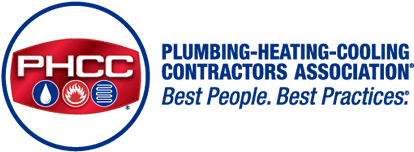
By Chuck White, Vice President of Regulatory Affairs
Docket ID No. EPA-HQ-OAR-2021-0044
The Plumbing-Heating-Cooling Contractors—National Association (PHCC) is the oldest construction trades association in the country representing approximately 3,200 plumbing and HVACR contractors employing over 64,000 professionals across the United States. Since 1883, this organization has been concerned with the safe installation of plumbing and HVAC systems. The members of PHCC are the last point of contact with consumers repairing, installing, or upgrading a system. Ultimately, these contractors are tasked with explaining the related costs for the work with the consumer.
PHCC is grateful for the opportunity to comment on EPA’s proposed regulation for the Phasedown of Hydrofluorocarbons: Establishing the Allowance Allocation and Trading Program. This Association has been supportive of the AIM Act and its intent to keep the United States a leader in the HVAC industry. Further, PHCC generally supports many parts of this rule which can help limit the effects of global warming through professional design, application, installation, and servicing of refrigerant bearing equipment.
A particular concern is the schedule of product phasedown. PHCC believes baseline allocations should be calculated using the time frame of 2011 through 2019 with a selection of the three highest years market share. It is a significant concern that gasses remain available for legacy products that may currently not be very old in the marketplace. The transition from R22 to R410A for air conditioning products is not very far behind us in the rearview mirror. Many of the consumers who elected to replace equipment with more ozone-friendly refrigerants now find themselves with another ecological dilemma. If the industry cannot supply refrigerants to service these products, EPA will have forced those consumers into an early replacement of efficient, sometimes highly efficient, HVAC systems. These consumer discussions happen over the kitchen table with a contractor, not scientists from Washington D.C.
PHCC would support increased availability of reclaimed refrigerant products provided they meet AHRI 700-2016 standard quality. It is important for service personnel to be able to rely on products in the marketplace, having proper certifications will assure reliable equipment operation. PHCC shares with many partners in the industry a concern for illegal gasses that may be smuggled in or fraudulently marketed. Not many years ago, the industry raised serious concerns over a product marketed to replace R-22, a product that was essentially propane. This industry worked with EPA to resolve that unsafe condition and protect workers, consumers, and property from a very hazardous situation.
Given that history, PHCC does have concern for the illegal trade in refrigerants but does not see the elimination of disposable cylinders as a solution. The unscrupulous actors in the market will still attempt to operate and will use the least cost options available. If disposable cylinders are not available, they will simply switch to refillable cylinders. The added cylinder cost will be insignificant to them given the profits that may be made. Removing disposable cylinders will not stop those bad actors but will penalize the good actors.
Contractors will have added costs to acquire these cylinders, either outright purchase or lease deposits. Contractors will have to manage two sets of cylinders, in their shops, in their vehicles, and on job sites. Mix-ups will happen and someone will get to a job with an empty cylinder that was believed to be full. It is a greater possibility to have contaminated refrigerant, some individuals may try to fill their own from a master cylinder. These cylinders do weigh more, over time that adds up to fuel costs, truck expenses, and bad backs.
The empty cylinders must be returned to be refilled; these must go to the right supplier. While many contractors have their preferred vendor, it is not unusual for a contractor to deal with multiple distribution points; Company A likely will not exchange a cylinder from Company B. The supply chain will undergo an overhaul to effect this change, that overhaul will not be free. The contractor will have one more item to discuss over the kitchen table with the consumer.
EPA has concern for the amount of leftover refrigerant, the “heel,” and supposes it to be as much as 8 percent. For many HFC’s that can be two pounds or more of product. Contractors are very cost-conscious and operate on relatively low margins, it does not behoove them to throw away 8 percent of a valuable commodity. It is further discouraged if the commodity is a regulated product subject to significant fines for improper disposal. PHCC believes the 8 percent is greatly overstated.
EPA would also push for tracking of products to solve these issues as well. The tracking of serial numbered tanks would be onerous and infeasible. Many smaller contractors lack the system to perform this operation, other larger operations may be able to do this but in the peak of season, it is impractical. Technicians or delivery personnel trade tanks at job sites when convenient, another service truck may be much closer to a service worker trying to finish a job, sometimes hours closer. This would be a logistical nightmare.
The greatest issue for tracking is the confidential business information that would necessarily be logged in a public forum. It is a serious question of how EPA staff would process the overwhelming data that would be generated and what would be done with it after the fact. There are currently rules in place for refrigerant handling, rules which have had infrequent, probably rare, enforcement actions, apparently EPA lacks staff for today’s rules already.
Writing the rules does not guarantee results in the field. Large public databases are, however, useful to some competitors, larger operators or data management operations may look for information to take mine for valued customers, estimate replacement schedules, or make spurious accusations against other competitors in their market. PHCC has no support for making confidential business information publicly available.
PHCC would however support developing professional requirements and standards for contractors and technicians to comply with. Without some form of certification, anyone who says they are an air conditioning service technician is one. It is true that there is EPA 608 certification, most contractors will tell you they have had a card for many years and have shown it once or twice. The original 608 card was not too difficult to test for. Lack of enforcement of any regulation renders it useless. As the industry moves to more complex refrigerants, some more flammable than traditional refrigerants, it will become more important to assure competency in the workforce.
PHCC has for many years been a strong proponent of registered apprenticeship and has approved programs in place across the country. PHCC would welcome any regulation supporting the education of the workforce.
The members of PHCC believe in a motto, The Best People, The Best Practices and hopes to live up to that in practice. The Association thanks EPA for this opportunity to be heard on these actions that would affect many of our members and their employees. PHCC is willing to participate in any fashion that would help advance the next generation of HVAC products.

